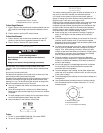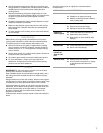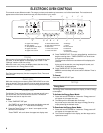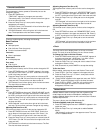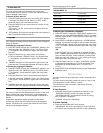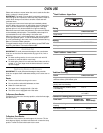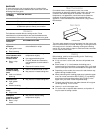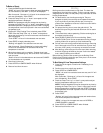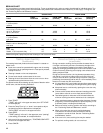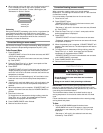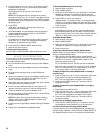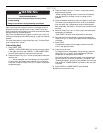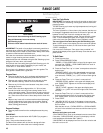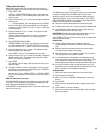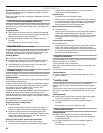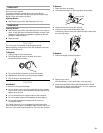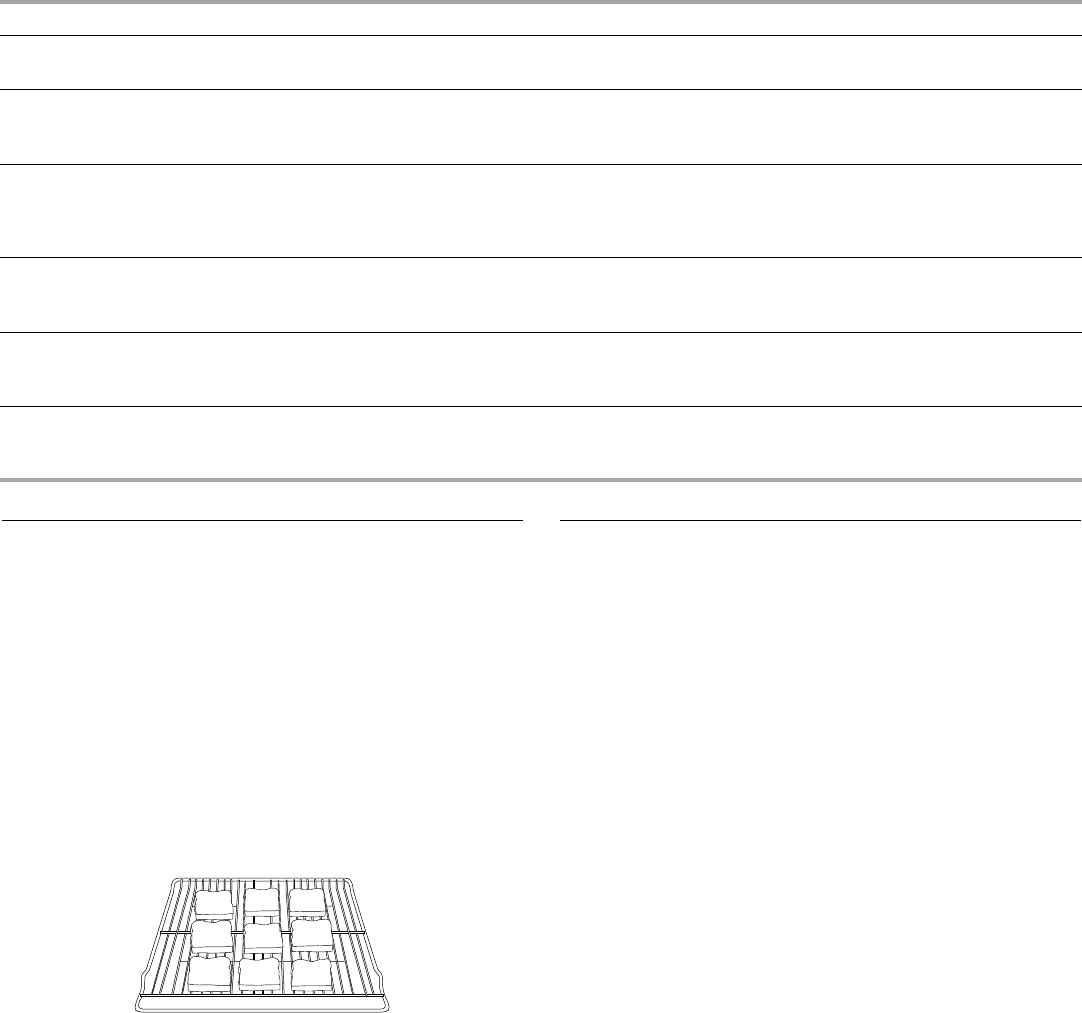
14
BROILING CHART
It is not necessary to preheat oven(s) when broiling. Times are guidelines only and may need to be adjusted for individual tastes. Turn
meat halfway through cooking time. Recommended rack positions are numbered from the bottom (1) to the top (5). For diagram, see
the “Positioning Racks and Bakeware” section.
*When broiling fish, spray broil pan with cooking oil. Do not turn fish filets.
Toasting - Upper Oven Only
(on some models)
For toasting bread and products that are toasted in a toaster or
toaster oven.
■ Lower oven cannot be operated while upper oven is toasting.
If the lower oven is operating when the Toast pad is pressed,
a beep will sound.
■ Toasting is based on time not temperature.
■ Frozen foods should not be toasted in the oven.
■ Toasting times will be shorter when the oven is hot or when
repeated toasting functions are done.
For optimal results when toasting up to 9 pieces of bread or other
similar items, see the following illustration.
1. Press TOAST.
“TOAST” will scroll in the upper text area, then “SET LEVEL”
will be displayed.
2. Press the Temp/Time “up” or “down” arrow pads to adjust
the toast time until the desired time is displayed.
“PUSH START” will scroll in the upper text area.
3. Press START.
“TOAST (setting)” will scroll in the upper text area. “(setting)”
is the setting you selected, for example Medium.
4. At the end of the set toasting time, “TOASTING COMPLETE”
will scroll in the upper text area.
5. Press CANCEL.
Convection Cooking - Lower Oven Only
(on some models)
During convection cooking, the fan provides increased hot air
circulation continuously and more consistently throughout the
oven. The movement of heated air around the food helps to
speed up cooking by penetrating the cooler outer surfaces. Food
cooks more evenly, browning and crisping outer surfaces while
sealing moisture inside.
During the Convect function, the ring element operates, along
with the fan, to provide an indirect source of heat in the oven
cavity. If the oven door is opened during convection cooking or
preheating, the element(s) and fan will turn off immediately. Once
the door is closed, they will come back on.
■ It is important not to cover foods so that surface areas remain
exposed to the circulating air, allowing browning and crisping.
■ Keep heat loss to a minimum by opening the oven door only
when necessary.
■ Choose cookie sheets without sides and roasting pans with
lower sides to allow air to move freely around the food.
■ Test baked goods for doneness a few minutes before the
minimum cooking time with a method such as a toothpick.
■ Use a meat thermometer to determine the doneness of meats
and poultry. Check the temperature of pork and poultry in 2 or
3 different places, including the thickest part.
■ Before convection cooking, position the rack(s) according to
the “Positioning Racks and Bakeware” section.
■ When using more than one rack, position bakeware/
cookware on the racks to allow movement of the fan
circulated air around the food. See the “Positioning Racks
and Bakeware” section.
■ If the oven is full, extra cooking time may be needed.
■ For optimal cooking results, do not cover food.
UPPER OVEN LOWER OVEN
FOOD
RACK
POSITION SETTING
COOK TIME
(minutes)
RACK
POSITION SETTING
COOK TIME
(minutes)
Steak
1" (2.5 cm) thick
medium 1 HI 22-28 4 HI 15-19
Ground meat patties
4 oz (113 g), ³₄" (2.0 cm) thick
up to 12, well-done
up to 6, well done
1
1
HI
HI
18-22
20-25
4
4
HI
HI
15-19
15-19
Pork chops
1" (2.5 cm) thick,
well-done 1 HI 27-31 4 HI 22-27
Chicken
bone-in, skin-on breast pieces
well-done 1 LO 40-50 3 or 4 LO 20-24
Fish*
Filets, flaky
Steaks, 1" (2.5 cm) thick, flaky
1
1
LO
LO
8-12
18-22
4
4
LO
LO
8-13
10-16



